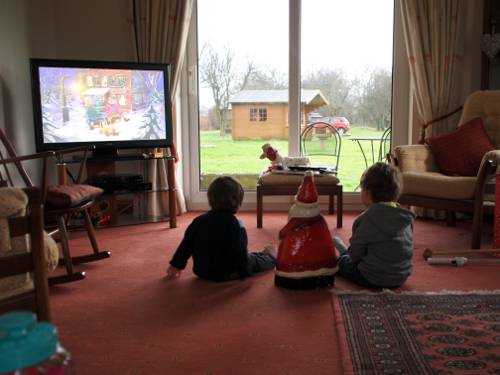
FAQ About The Evolution of Children's Animation TV Shows

How have children's animation TV shows changed over the decades?
Children's animation TV shows have undergone significant changes over the decades, reflecting advancements in technology, storytelling techniques, and educational strategies. In the early days, animations like "Looney Tunes" and "Tom and Jerry" focused primarily on slapstick humor and entertainment. As time progressed, shows began to incorporate more sophisticated narratives, cultural references, and educational content, exemplified by programs like "Sesame Street" and "Dora the Explorer." Technology has also played a crucial role, with the shift from hand-drawn animations to computer-generated imagery (CGI), significantly increasing the production quality and storytelling possibilities.

What role does education play in modern children's animated TV shows?
Education plays a significant role in modern children's animated TV shows. Many programs are designed to be both entertaining and educational, offering children lessons in social skills, problem-solving, language acquisition, and basic math or science concepts. Shows like "Blue's Clues" and "Paw Patrol" incorporate interactive elements and encourage viewer participation to help reinforce learning. Additionally, networks and creators are increasingly mindful of cultural diversity and inclusivity, ensuring that the educational content is accessible and relatable to a wide audience.

In what ways has technology influenced children's animation?
Technology has dramatically influenced children's animation, enhancing both the production and viewing experience. The evolution from traditional hand-drawn animation to sophisticated CGI and 3D animations has allowed for more intricate visuals and complex worlds in shows like "Peppa Pig" and "The Lion Guard." Moreover, advancements in streaming technology have altered how children consume content, providing on-demand access to a vast library of animated programs. This technological progress also enables interactive storytelling and integration with educational apps, creating a more engaging experience.

Which children's animated TV shows have been pivotal in shaping the genre?
Several children's animated TV shows have been pivotal in shaping the genre. "Mickey Mouse Clubhouse" introduced innovative storytelling and interactive elements that engaged children directly. "Sesame Street" revolutionized educational television by combining entertainment with fundamental learning concepts. "SpongeBob SquarePants" demonstrated how animation could appeal to both children and adults with its witty humor and vibrant characters. These shows, among others, have set benchmarks in storytelling, animation quality, and educational value.

How do modern children's animated shows address cultural diversity and inclusivity?
Modern children's animated shows have become increasingly committed to presenting cultural diversity and inclusivity. Programs like "Doc McStuffins" and "Mira, Royal Detective" feature diverse characters and explore different cultures and traditions. Many shows make a conscious effort to include a variety of ethnicities, family dynamics, and languages, promoting acceptance and understanding among young audiences. This approach not only reflects societal changes but also helps children see themselves represented on screen.

What are some classic children's animated TV shows that are still popular today?
Several classic children's animated TV shows have maintained their popularity due to their timeless appeal and ongoing cultural significance. "Tom and Jerry," "Looney Tunes," and "Scooby-Doo" continue to be beloved by new generations through reruns and reboots. These shows often embody universal themes and humor that resonate with both children and adults, allowing them to remain relevant in today's media landscape.

How has the art style in children's animation evolved?
The art style in children's animation has evolved considerably, moving from the detailed, hand-drawn techniques of the early 20th century to the sleek, computer-generated visuals of today. In the past, shows like "The Flintstones" and "The Jetsons" demonstrated the use of traditional animation techniques. Today, productions like "Peppa Pig" and "PAW Patrol" utilize digital tools to create clean, colorful visuals that appeal to modern sensibilities. The variety in art styles today—from 2D vector art to 3D animation—offers a wide range of visual experiences for young audiences.

How important is storytelling in children's animated TV shows?
Storytelling is crucial in children's animated TV shows as it serves as the primary vehicle for engaging young audiences and imparting lessons. Effective storytelling can capture children's imaginations, introduce moral and ethical themes, and enhance cognitive development. Shows like "Avatar: The Last Airbender" and "Adventure Time" have pushed the boundaries by integrating complex narratives and character development typically not seen in earlier children's programming. Good storytelling ensures that the content is both entertaining and meaningful.

What impact do children's animated TV shows have on children’s development?
Children's animated TV shows can significantly impact children's development, particularly in areas such as language acquisition, social skills, and emotional intelligence. Shows designed with educational content can help with language development and introduce basic academic concepts in an accessible way. Additionally, by presenting diverse characters and scenarios, animated programs can also aid in the development of empathy and social understanding, helping children learn to navigate various interpersonal scenarios.

Why are reboots of classic children's animated TV shows so popular?
Reboots of classic children's animated TV shows are popular for several reasons. They allow new generations to experience beloved characters and stories with modern updates that resonate with contemporary audiences. These reimagined versions often incorporate advanced animation techniques and current social and cultural themes, making them relevant today. Moreover, there is a nostalgia factor for parents and older viewers who enjoyed the original series, providing a shared viewing experience across generations.

How do children's animated shows incorporate life lessons into their narratives?
Children's animated shows often seamlessly incorporate life lessons into their narratives through relatable characters and scenarios. By depicting characters facing and overcoming challenges, resolving conflicts, and making decisions, these shows can model positive behavior and decision-making skills. For example, "Daniel Tiger's Neighborhood" uses songs and stories to convey messages about empathy, patience, and problem-solving, making these lessons more memorable and engaging for young viewers.

What makes a children's animated TV show successful?
A successful children's animated TV show typically combines captivating storytelling, engaging characters, educational content, and visually appealing art styles. Shows like "Peppa Pig" and "PAW Patrol" balance entertainment with lessons that are relevant and understandable to children. Additionally, successful shows often stay current with societal trends and audience preferences, ensuring that they remain relatable and engaging for their intended audience.

How do animated children's shows adapt books and other source materials?
Animated children's shows often adapt books and other source materials by capturing the essence and core themes of the original content while modifying the format to suit visual storytelling. Key story elements and characters are preserved to maintain familiarity, but adaptations may include additional narratives or expanded character development to fit episodic structures. "Arthur" and "The Magic School Bus" are examples where classic children's books have been successfully transformed into popular animated series.

What are some examples of children's animated shows that tackle complex themes?
Several children's animated shows tackle complex themes, offering depth and promoting critical thinking among young audiences. "Avatar: The Last Airbender" explores themes such as war, peace, and personal identity through a fantasy narrative. "Steven Universe" addresses issues of identity, acceptance, and family relationships. These shows use imaginative settings and engaging plots to explore and communicate complex ideas in a way that is accessible to children.

How has children's animated TV changed in response to globalization?
Children's animated TV has evolved in response to globalization by incorporating more diverse cultural perspectives and narratives that appeal to a global audience. Many shows are now produced with an international audience in mind, often dubbed or subtitled in multiple languages and reflecting a mix of global cultural elements. This shift not only broadens the appeal of these programs but also educates young viewers about different cultures and global issues.

What is the significance of animation festivals for children’s TV show creators?
Animation festivals play a significant role for creators of children's TV shows by providing a platform to showcase their work, gain visibility, and connect with other industry professionals. Festivals like Annecy International Animation Film Festival and Ottawa International Animation Festival often highlight innovative and influential works, offering opportunities for creators to receive recognition and feedback from peers and audiences. These events can also inspire and highlight emerging trends and new approaches to storytelling and animation.

How has gender representation in children's animated TV shows evolved?
Gender representation in children's animated TV shows has evolved significantly, moving towards more balanced portrayals of male and female characters. Earlier shows often depicted traditional gender roles, but recent productions strive for gender equality and diversity. Shows like "She-Ra and the Princesses of Power" and "Steven Universe" showcase strong female protagonists and diverse gender expressions, promoting equality and inclusivity. This evolution reflects broader societal shifts towards greater gender awareness and acceptance.

What trends are currently shaping the future of children's animated TV shows?
Current trends shaping the future of children's animated TV shows include increased focus on digital interactivity, educational gamification, and cultural inclusivity. Streaming platforms are further influencing content accessibility, offering personalized viewing experiences and diverse programming. Innovative storytelling methods that blend educational content with immersive experiences, such as augmented reality, are also gaining traction. These trends suggest a future where children's programming is more interactive, inclusive, and globally connected.

Why is nostalgia an important factor for children's animated TV series?
Nostalgia is an important factor for children's animated TV series as it fosters a multigenerational appeal and emotional connection. Shows like "My Little Pony" and "Teenage Mutant Ninja Turtles" tap into the nostalgia of adult viewers who watched the originals, creating opportunities for shared experiences with their children. Nostalgia offers a sense of comfort and familiarity, contributing to the enduring popularity and relevance of these series.

How do children's animated TV shows address environmental issues?
Children's animated TV shows address environmental issues by integrating themes of conservation, sustainability, and respect for nature into their narratives. Programs like "Octonauts" and "Wild Kratts" teach children about different ecosystems, the importance of biodiversity, and how to protect the planet. By making these topics relatable and interesting, these shows encourage young viewers to be environmentally conscious and responsible.
